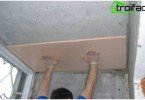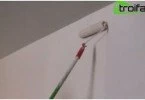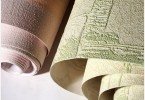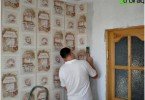How to paint wallpaper for painting
Wallpaper for painting is deservedly considered one of the best materials for decorating walls and ceilings. Painted wallpapers are practical, multiple repainting is possible, they are easy to clean. In addition, such wallpapers are beautiful – the structural surface allows you to hide minor defects and get interesting wall decoration options. It should be noted the effect of a seamless surface. If you also decided to use this popular material for decoration, but don’t know how to paint the wallpaper for painting, this article will undoubtedly help you find your way..
Content
- Types of wallpapers and dyes for painting
- Rules for the selection of coloring composition
Types of wallpapers and dyes for painting
- structured paper
- vinyl coated non-woven
- cullet (based on fiberglass)
All wallpapers intended for painting are moisture resistant, so that they can be painted repeatedly.
Water dispersion or alkyd paints are used for painting..
Despite the fact that alkyd paints are characterized by increased wear resistance, their use in residential premises is undesirable. This is due to the air tightness of the resulting coating. Wallpaper painted with water dispersion paint more environmentally friendly.
Rules for the selection of coloring composition
- it is better to paint paper wallpaper for painting with water dispersion paint (wallpaper can be repainted from 5 to 15 times);
- for non-woven wallpaper with vinyl spraying, acrylic matte water-dispersed paints are suitable;
- fiberglass wallpapers are painted with the same colors as non-woven ones, but first the wallpaper needs to be primed (in order to reduce paint consumption).

Tools and materials needed for painting
Tools and materials for painting
- paint;
- roller;
- brushes;
- tray for paint;
- masking tape.
Work order
- First of all, it is necessary to calculate the amount of paint that will be required for staining. To do this, measure the surface area to be painted. Then, using simple arithmetic calculations, we obtain the required amount of paint by multiplying the paint consumption (usually indicated on the can) by the surface area to be painted. It is important in the calculations to take into account the fact that they are usually painted in several layers to completely cover the surface with paint. It is better to buy paint with a margin. It will come in handy after repairs for minor restoration (for example, to paint over a greasy spot at the switch or a wall painted by a child).
- Tinting. Dispersion paint on sale is only white. In order to get the right color, color is added to it. All paint is tinted immediately. If the paint is not enough, getting into the tone again will be problematic. It is advisable to mix paint and color with a construction mixer (for uniformity of composition).
- Surface preparation. If it is necessary to stain wallpaper that has already been painted before, it is important to ensure the integrity of the coating: glue the peeled wallpaper, putty on the cracks, and also clean out the bumps of the previous painting.
- The borders of the painted surface should be sealed with masking tape.
- Painting. The technology for painting wallpapers is not much different from the method of painting other surfaces: paint is applied with a paint roller. Places that are difficult to paint with a roller (corners, at the switch, under the ceiling) are painted over with a brush. If it is necessary to apply a second coat, wait until the previous one has completely dried..
Above described the easiest way to color the wallpaper. If you’re curious about how to color your wallpaper in an unusual way, below you will read a few tips for surface finishes..
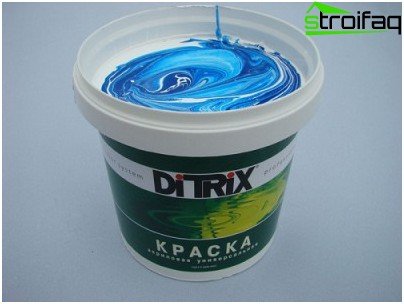
Mix color and paint immediately in full, required for staining the wallpaper in the room, to create a similar color with a lack of dye will be very difficult
Non-woven wallpaper can be painted before pasting onto the wall from the back. It is strange at first glance, but the thing is: the porous non-woven structure, saturated with paint, forms a background on the front side of the wallpaper, while waterproof vinyl spraying does not stain, while maintaining a white color. Thus, an interesting textured surface can be obtained..
A similar effect can be achieved if several shades of paint are used, when applying wallpaper for the first time using a long-nap roller (for thorough staining), and when re-painting, using a short-nap roller. This method requires accuracy, because the second coat of paint is of a different color, it is important to avoid strong pressure with the roller during secondary painting.
As you can see, painting wallpaper is a simple matter, it does not require special professional skills. Paint the surface quickly and accurately, avoiding too much paint (so that the wallpaper does not peel off).


